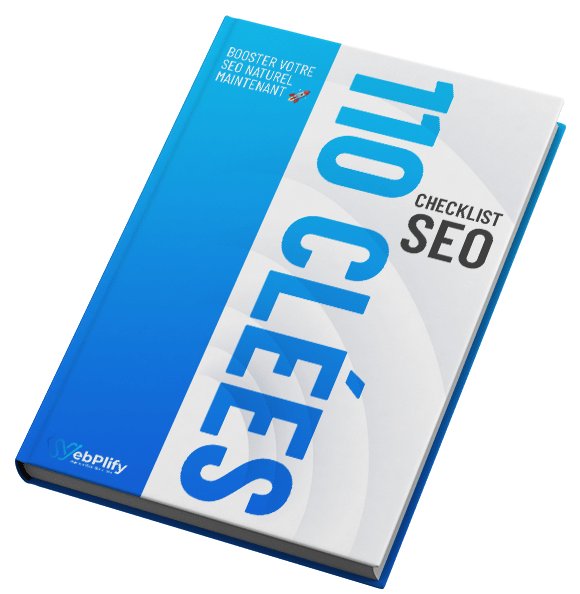✅ In a nutshell: 6 signs that it’s time to redesign your website
Outdated visual design: A site that looks outdated is detrimental to your brand image and perceived credibility.
No mobile compatibility: A non-responsive site is penalized by Google and drives users away.
Slow performance: Slow page loading increases the bounce rate and leads to lost conversions.
Declining conversion rates: A poor user experience or non-engaging content are often the cause.
Out-of-date content: Out-of-date information reduces visitor interest and degrades your SEO.
SEO problems: A drop in search results often means it’s time to optimize structure, content and performance.
Is your website not generating as many results as it used to? This could be a sign that you need to redesign your website. An obsolete site, with an outdated design or sluggish performance, risks driving away your visitors and damaging your brand image. In this article, discover the 6 telltale signs that it’s time to modernize your online presence and breathe new life into your website.
Table of contents
ToggleOutdated visual design
An outdated web design can do considerable harm toyour company’s professional image. To maintain your competitiveness, it’s important that your website adheres to current design trends. When visitors perceive an outdated aesthetic, they often associate it with a lack of professionalism or innovation on the part of the company.
Before delving into the details, let’s understand the importance of a website redesign. A website generally has a lifespan of 3 to 5 years before it needs to be modernized. SEO rules are constantly evolving, and yesterday’s best practices no longer correspond to today’s requirements. The ergonomics of a platform must be regularly optimized to ensure smooth and pleasant navigation.
| Period | Main characteristics | Impact on the company |
|---|---|---|
| Before 2010 | Static design, little interactivity | Outdated image, lack of appeal |
| 2010-2015 | Appearance of responsive design, more dynamic interfaces | Enhanced user experience on mobile |
| 2016-2020 | Minimalist design, neat typography, videos in the background | Modern image, increased visitor engagement |
| 2021-Today | Subtle animations, micro-interactions, enhanced accessibility | Optimized user experience, better conversion |
Site not mobile-compatible
Mobile adaptation is now an absolute necessity for any website. Google began a transition back in 2016 to adapt to new browsing habits, emphasizing the importance of an optimal user experience on mobile. Non-adapted websites can see their visibility drop dramatically in search results, directly affecting traffic and business opportunities.
From July 2024, Google will index all pages via its mobile version. Non-optimized sites therefore risk being penalized by the Mobilegeddon algorithm. This penalty can go as far as complete de-indexation, rendering your site invisible in search results. It’s worth noting that Google favors “responsive” sites offering fluid navigation on all devices.
Here are the telltale signs of a website not optimized for mobile devices.
- Text: Text is illegible without zoom, which frustrates visitors.
- Content: Content overflows the screen, detracting from the user experience.
- Buttons: Buttons are too small, making navigation difficult.
- Loading: Loading times are long, increasing the bounce rate.
These signs indicate that a redesign is needed for a better mobile experience.
Slow performance
The technical performance of your website has a direct influence on the behavior of online users. A site that loads too slowly frustrates visitors, who are quick to leave the page. According to a Deloitte study, if the loading time increases from 1 to 5 seconds, the probability of bounce increases by 90%, which represents a considerable loss of business opportunities.
Loading speed is an important factor in your website’s conversion rate. Nearly 70% of Internet users say that their online purchasing decision is directly affected by website performance. To illustrate this correlation, let’s consider that an e-commerce site loading in less than a second can achieve a conversion rate of over 3%, while the average drops to 1.08% for those taking 5 seconds to load. These data underline the crucial importance of optimizing technical performance when redesigning a site.
Lower conversion rates
The analysis of web metrics is a valuable indicator for detecting malfunctions on your website. A drop in the conversion rate often signals underlying problems that need to be identified quickly. In fact, when the percentage of visitors completing the desired actions drops, this generally reflects a faulty user experience or content that no longer meets your audience’s expectations.
A complex user journey is one of the main barriers to engagement on your website. Visitors confronted with laborious navigation or overly complex forms often abandon their journey before conversion. In this context, it’s important to note that 88% of Internet users don’t return to a site after an unpleasant experience, while 68% leave the page immediately without reading the content when the experience is poor.
Obsolete content
Your website’s content represents its soul and raison d’être in the digital world. Up-to-date, relevant content is an important element in maintaining your company’s credibility online. Outdated information sends out a negative signal to visitors, and can significantly damage your brand image and the effectiveness of your online presence. With this in mind, it’s a good idea to carry out a regular analysis of your content to identify elements that need updating.
Successful websites require periodic content updates to keep up with current user expectations. The ideal update frequency varies according to the type of site and its niche, but for a blog or editorial articles, a weekly publication is generally recommended to maintain audience engagement. By providing your potential customers with accurate, up-to-date information, you position yourself as a trustworthy brand to whom they can turn for reliable information about your field of activity.
Keyword strategy is also an important element in optimizing your website. Performance analyses enable you to identify what’s working well, and to make the necessary changes to your content strategy when redesigning. By taking a close look at your traffic data, you can determine which keywords are generating results and which require revision. This analytical approach allows you toeffectively align your content with your target audience’s current searches and needs, reinforcing the relevance of your website as a whole.
Search engine optimization (SEO) problems
Poor SEO directly affects your company’s online visibility. A degraded position in search results leads to a drop in organic traffic, reducing potential business opportunities. Sites that don’t comply with current search engine requirements gradually lose their ranking in the results pages, becoming virtually invisible to users.
Technical optimization is the foundation of effective SEO. URL structure, meta tags, title hierarchy and content quality influence your search engine positioning. Obsolete web architecture can compromise the proper indexing of your pages by Google, while a redesign can incorporate the latest SEO practices to improve your visibility.
These technical signals indicate SEO problems to be corrected during a redesign.
- Slowness: Website slowness penalizes user experience and SEO.
- Errors: Technical errors hamper navigation and referencing.
- Updates: Lack of regular updates compromises security and performance.
- Content: Duplicate content can lead to Google penalties.
These corrections will improve search engine positioning.
For an effective SEO strategy, consider a web marketing agency. An in-depth analysis of your current situation will help identify priority areas for improvement for your website. Learn how to improve your website’s SEO with this comprehensive guide to SEO.
Find out how to redesign your website while optimizing SEO. Transitioning to a new site requires a precise strategy to maintain and improve your positions in search results. A methodical approach ensures that your redesign strengthens rather than compromises your online presence.
Non-optimized navigation and ergonomics
Confusing navigation on your website can have disastrous consequences on visitor behavior. Indeed, when users can’t find the information they’re looking for quickly, their frustration increases and they usually leave the site without exploring further. This reaction translates into a high bounce rate, which signals a poor user experience to search engines, and can harm your website’s SEO.
Optimizing the user journey is a strategic investment with multiple benefits for your online business. A smooth, intuitive flow through the different pages of your website encourages visitor engagement and considerably improves conversion rates. What’s more, well thought-out navigation contributes to customer satisfaction, a fundamental element in building loyalty and turning occasional visitors into regular customers.
UX analysis is a valuable tool for evaluating your website’s performance. Methods such as A/B testing enable you to compare different versions of a page to determine which structure generates the most conversions. Furthermore, user testing provides a concrete view of your visitors’ experience, revealing any potential obstacles to navigation. In this context, it’s worth noting that 88% of Internet users don’t return to a site after a poor user experience. Call us today for your FREE website diagnostic and identify areas for improvement.
Comparison
Prioritizing the elements of a website redesign is based on an analysis of the company’s specific objectives. An effective strategy is to carry out a comprehensive audit that identifies the website’s current weaknesses. The prioritization of issues should take into account their impact on the user experience as well as on SEO, allowing available resources to be optimized.
| Sign | Impact | Priority |
|---|---|---|
| Obsolete design | Credibility, brand image | Medium to high |
| Not mobile compatible | Traffic, bounce rate | High |
| Slow performance | Conversion, satisfaction | High |
| Outdated content | SEO, engagement | Average |
| SEO problems | Visibility, traffic | High |
| Non-optimized navigation | User experience, conversion | Medium to high |
| The importance of each sign varies according to the objective. | ||
To structure your thinking and facilitate collaboration with a service provider when redesigning your website, you’ll need to draw up specifications. This document helps formalize precise needs and establish a clear action plan for modernizing your online presence. Call us today for your FREE website diagnostic and benefit from a personalized analysis of the priority elements to be redesigned on your website.
These signs of obsolescence don’t lie: your website deserves a website makeover to regain its full effectiveness. By quickly identifying these indicators, you can transform an outdated site into a high-performance tool that meets the expectations of today’s users and search engines. Don’t wait for your online presence to become a hindrance rather than an asset to your business.
Frequently asked questions about website redesign (FAQ)
How much does it cost to redesign my website?
There’s no fixed price for redesigning a website. The cost can vary considerably, influenced by the type and size of the site, the level of customization required, the service provider chosen (freelance, web agency) and the deadline imposed. A complex e-commerce site with tailor-made functionalities will cost more than a simple showcase site.
To get an accurate estimate, it’s essential to ask for a detailed quote. Providing clear and comprehensive specifications, detailing specific needs and expectations, will enable service providers to make a suitable and transparent offer.
What is site maintenance?
Website maintenance is the essential process of maintaining a site on a regular basis to ensure that it’s running optimally and meeting its objectives. This includes tasks such as monitoring traffic, updating content and securing the site.
Preventive maintenance is crucial to avoid future problems, notably by updating the CMS, themes and plugins. Security maintenance, on the other hand, is used to monitor and update protective measures against hacking and the risks associated with protecting user data.
How do you get your website back up the rankings?
To improve a website’s SEO, content optimization is essential. You need to ensure that it responds precisely to the queries and intentions of web users. SEO optimization, including title hierarchization and the use of relevant keywords, is also essential.
Images play an important role in SEO, and should be relevant and easy to understand. Sending a sitemap to Google can help ensure that all important site URLs are indexed. It takes time for changes to be reflected in Google search results.
How to make your website profitable?
To make a website profitable, several strategies can be implemented, including monetization via different methods. Quality content is essential to attract and retain an audience, thus increasing the value of the site.
Advertising (PPC) with Google AdSense and affiliate marketing are popular options. The profitability of a website depends on traffic, so it’s crucial to define your objectives and choose a profitable niche before you start.
What's the real price of website creation?
The cost of creating a website varies considerably depending on a number of factors. Using a web agency is generally the most expensive option, while a freelance developer can offer a similar service at a lower price.
Several factors influence the price, such as the type and size of the site, the level of personalization and the service provider chosen. It’s advisable to request a detailed quote by providing precise specifications to obtain an estimate tailored to your needs.















